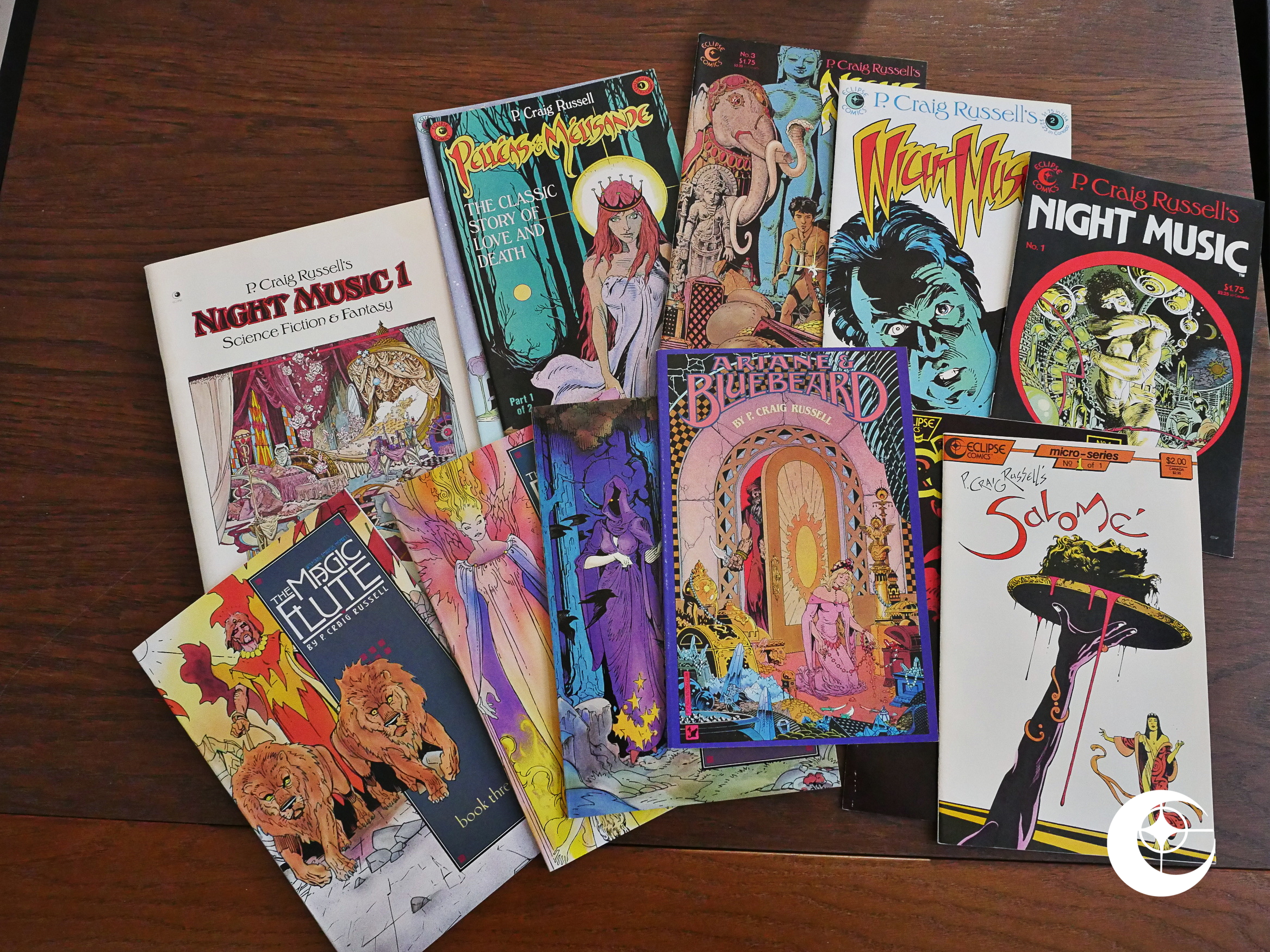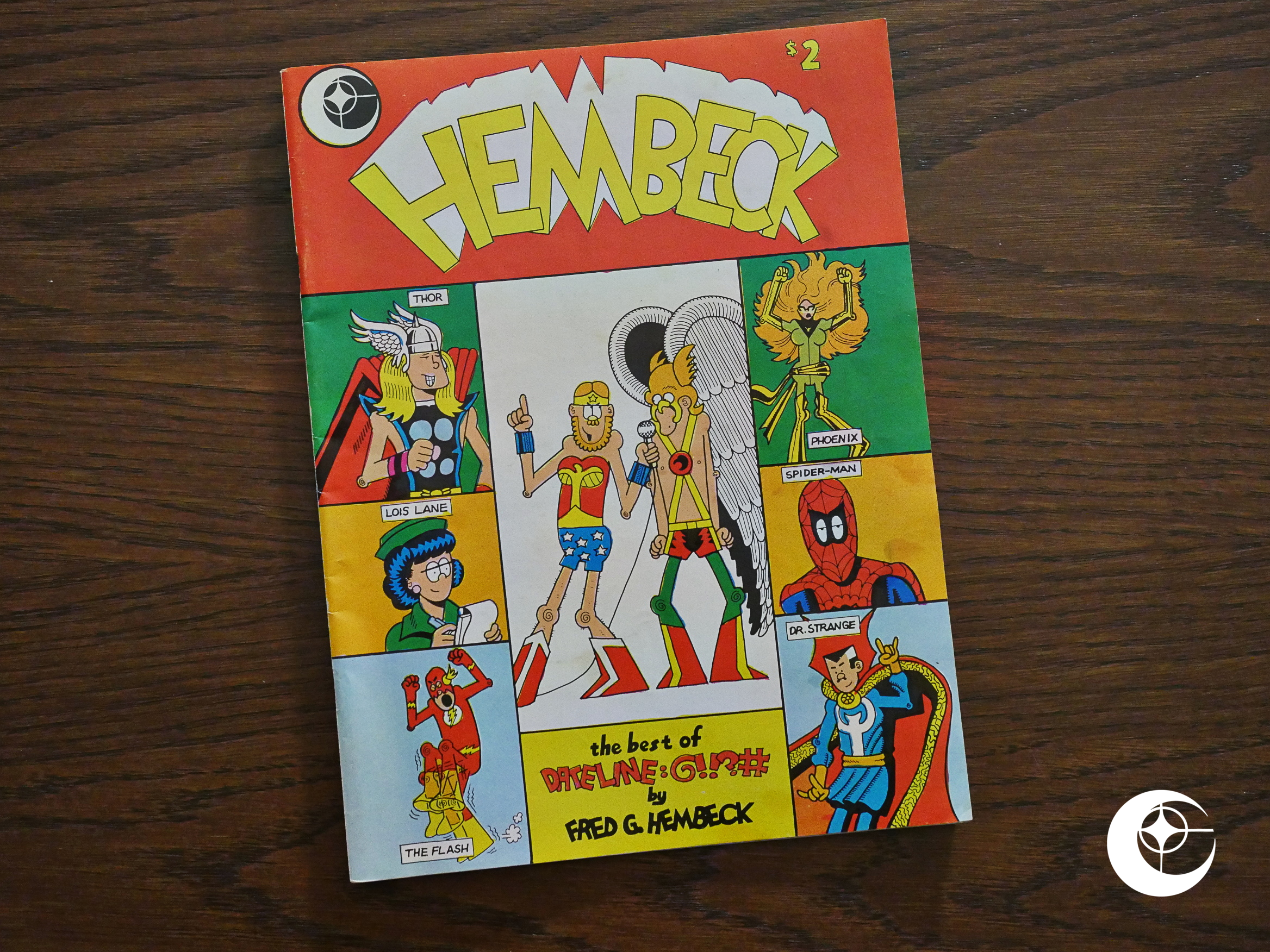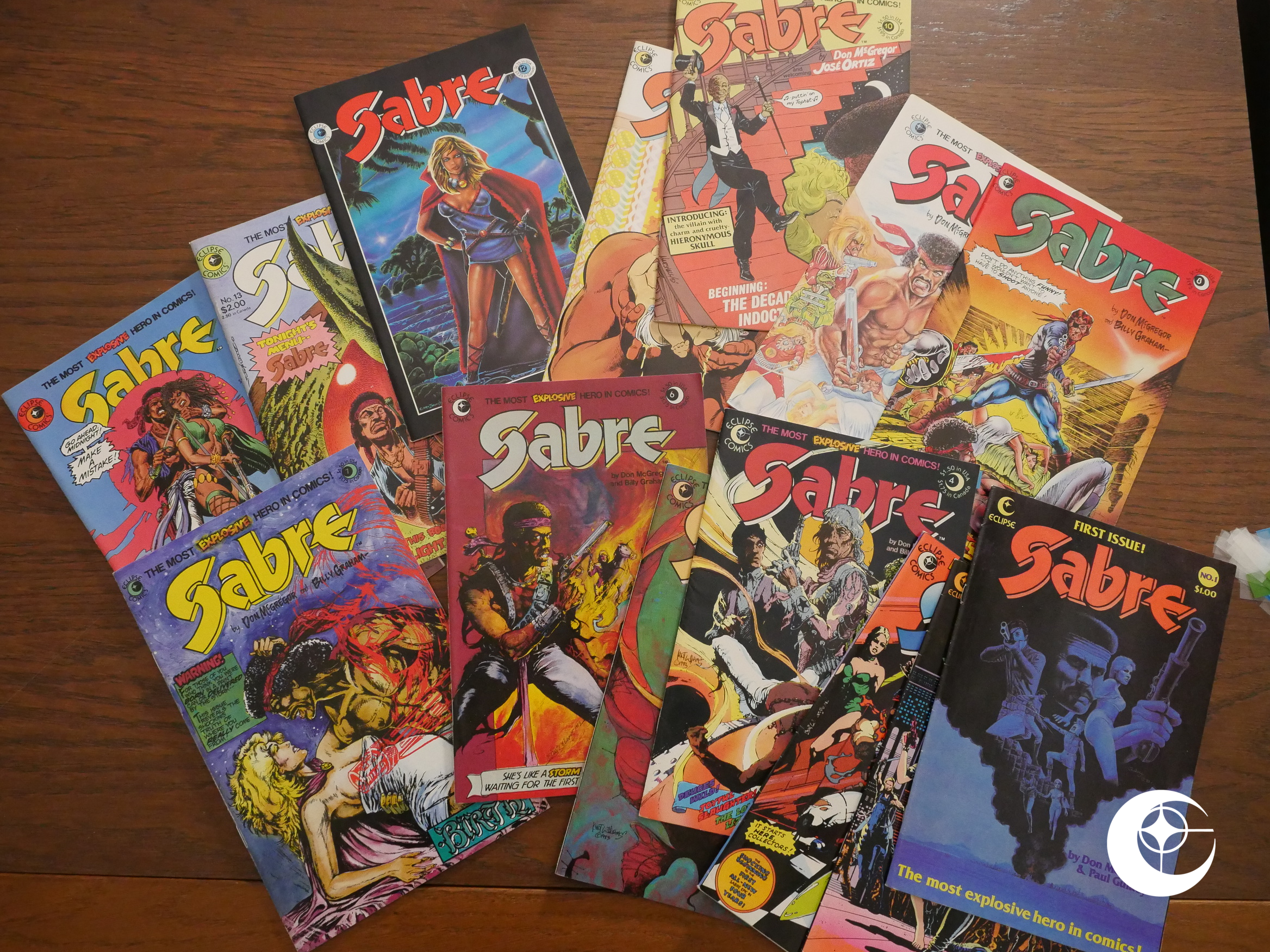Detectives, Inc. (1980), Detectives Inc. (1985) #1-2, Detectives, Inc.: A Terror of Dying Dreams (1987) #1-3 by Don McGregor, Marshall Rogers, Gene Colan et al.
The initial volume of Detectives Inc. was Eclipse Comics’ first squarebound publication. It’s basically in the European “album” format, which was the direction American comics publishers tried to push for more upscale projects for a few years before deciding that smaller pages sold better. Or something.
Don McGregor had already published the Sabre “comics novel” at Eclipse, but this is Marshall Rogers’ debut. Both are refugees from the 70s Marvel work camps.
McGregor seems like a likeable guy, but his sentences have a way of getting away from him. If he had stopped that one about half-way there, it still wouldn’t be good, but it wouldn’t have qualified for Worst Run-On Simile In A Hard-Boiled Detective Comic of 1980 prize (it was a very contested field).
Oh, how they prate. I realise that McGregor isn’t going for naturalistic dialogue (or rather, I sincerely hope), but here we have two private eyes, I mean investigators, who are approaching a meeting with some shady characters… and this is what they say walking upstairs? OK.
But what about the artwork? Rogers is a quite distinctive artist. His panels are often filled to the brim with various patterns and litter and textures… Often making his attractively lanky characters hard to spot in his panels.
He’s frequently obsessed with trying to make McGregor’s talky-talky pages look less boring by varying the shots and layouts. On this page we have the two characters talking in a diner, while the middle panels are a flashback. The present-day panels are more textured, while the flashbacks have little shading. That bit’s kinda neat. But what’s with all the angles on the two in the diner? Straight on, from below, from above. It’s just… distracting.
On the other hand, the more distraction you get from those lines, the better, I guess.
McGregor does have some self-awareness, though. Sophomorically compelling. Except the compelling part.
Hey, that’s a nice t-shirt!
OH NOES!
Well, I didn’t think that was a very good book, but what did the critics at the time think? What does the trusty Comics Journal search engine say?
Kim Thompson, Comics Journal 59:
Detectives, Inc. is a disastrously mawkish and disjointed attempt to lash together pulp fiction (in this case, a detective story) with a Serious theme. Betrayed by Over— whelming shortcomings in their styles and approaches, Don McGregor and Marshall Rogers have, with all the best intentions in the world, given birth to a monstrosity of a book that fails on all the levels it aspires to.
Ouch.
R. Fiore rebuts in Comics Journal 62:
I found Detectives, Inc. particularly impressive because it succeeds in a genre that is so hard to do well. The hard-boiled detective story can smoke Out a fake in a minute, but McGregor captures the necessary mixture of cynicism and sentimentality, and follows the most important rule: don’t try to be too tough. Furthermore, Detectives, Inc. is that rarest of things in comics, real story. That is, a story that comes from character rather than plot mechanisms.
I think Thompson won the discussion.
Four years later, Eclipse republished the comics novel as a two-part standard-size colour comic book series. I was curious as to whether the colourist would be able to make Rogers’ artwork more legible, but it has rather the opposite effect.
Included in the backmatter is a “making of” retelling of sorts, excerpted from McGregor’s The Variable Syndrome book (which I bought at the time; I was a huge Don McGregor fan as a child). While the text does touch quite a bit on the history of Detectives Inc., it’s mostly about how shabbily he’d been treated by Marvel.
But reading passages like the above, I’m getting a sneaking suspicion that perhaps some of the problems here is that McGregor has an inability to suss out when he’s being ribbed.
He also mentions how structurally daring he was during the writing of the first Detectives Inc. story: He didn’t introduce the plot until page 20, which he never would have been allowed to do at Marvel! That’ll show them!
My response to that is: There was a plot!? Really!?
Look at the difference between the original sketch and the finished product! Er… Uhm… OK, perhaps Eclipse doesn’t have the absolutely best repro people. Here’s what it really looked like in the book:
Anyway.
catherine ⊕ yronwode chimes in with a page of “i told you so” when it comes to comics censorship. I’m not quite sure what she’s referring to, but it might either be the birth scene in Sabre, or the birth scene in Miracleman. (Eclipse is very birtherish.)
Anyway, the second Detectives Inc. mini-series is a new story illustrated by Gene Colan. It’s shot directly from Colan’s pencils and printed in sepia. I’ve always enjoyed Colan’s artwork: He can draw people talking and talking and manages to vary the panels in ways that seem natural, but still dynamic. And the first issue is really well reproduced and printed: You really get to enjoy the moody pencils.
The backmatter is about McGregor making a movie from the same storyline that the mini-series cover. I’ve done my best to search for it on imdb, but I can find no trace of it, so perhaps it was never released?
It’s a much better storyline than the first one. It’s a genuine mystery and while the characters are mostly stock characters, it’s not bad. It’s still way overwritten.
The second issue isn’t as well printed as the first one. Instead of the pencils being lush and moody, they seem just … blotchy. While reading, I was wondering whether they’d switched to normal four colour CMYK printing instead of two-tone (sepia and black) as in the first issue. But the registration seems too tight…
But then the backmatter switches to full-colour (FSVO), too…
And in the third issue the production turns to shit. It really is a four-colour printing, and here half the pages are off register, which means that all the lines are doubled in brown and yellow. It’s like reading through very blurry glasses.
I wonder whether this was done just so they could have colour snaps from that risible-looking movie in the backmatter, so they prioritised that over Colan’s artwork? In which case:
Shame! Shame!
The reasoning may be less horrible than that, though. Perhaps normal four-colour printing is just way cheaper than two-tone sepia.
Anyway.
IDW has reprinted all the Detectives Inc. material in a single volume. Perhaps they fixed the repro issues.
































































































